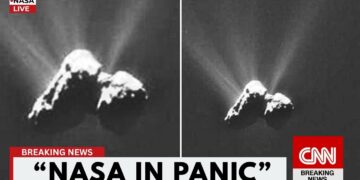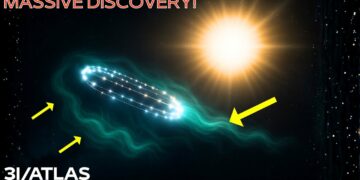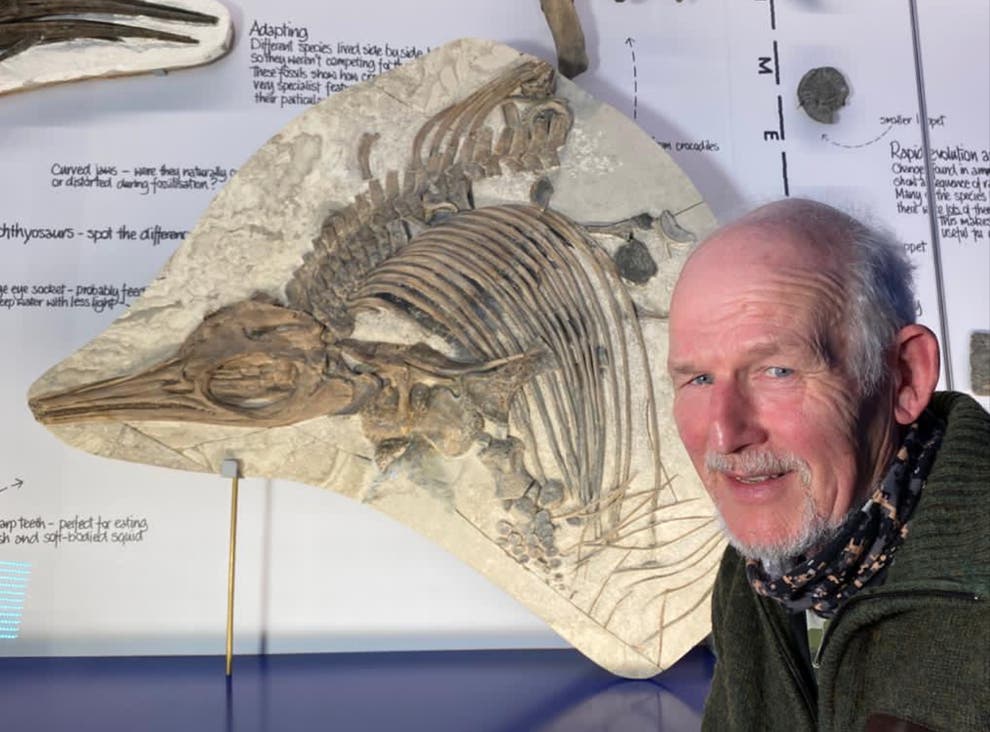It began with a faint flicker, a barely noticeable dot captured by a telescope’s digital sensor, one of countless specks scanned nightly across the vast sky. Initially, it seemed insignificant, just another routine detection lost in the cosmic background. But when astronomers examined it closely, the flicker revealed something extraordinary. It wasn’t just moving quickly—it was moving too quickly, defying any known orbital path. The room fell silent with a chilling realization: this object wasn’t from our solar system. It was a true interstellar visitor, and it was heading our way.
What followed was a flurry of activity—confirmations from observatories worldwide, a designation as “3I/ATLAS,” and urgent attention from NASA. But the real shock came from Harvard’s controversial astrophysicist, Avi Loeb, who suggested this object might not be natural. He urged NASA to aim the James Webb Space Telescope, humanity’s most advanced space observatory, at the object—not just to observe it, but to determine if it was moving under its own power. The telescope’s findings were not made public, but behind closed doors, panic began to stir.
The ATLAS system, designed for early warning and positioned in Hawaii and South Africa, constantly scans the sky for anomalies. Between June 25 and 29, 2025, it detected something unusual: an object moving faster than any asteroid, unbound by the sun’s gravity, and following a trajectory that didn’t align with expectations. Initially dismissed as a glitch, the object’s reality was confirmed by over 100 independent observations from global telescopes, compiled by the Minor Planet Center. Its trajectory traced back not to the edges of our solar system, but to deep space, possibly the galactic core. Even more unsettling, it was accelerating—not erratically, but just enough to raise alarm among orbital physicists, as such behavior suggested an external force.
The James Webb Space Telescope, capable of detecting faint light and heat from the universe’s edge, was redirected to study this visitor. Loeb, who previously suggested the interstellar object ‘Oumuamua might be artificial, pushed for analysis of non-gravitational acceleration, hinting at possible propulsion. The telescope collected data, but unlike observations of comets or asteroids, none of it—raw images, heat maps, or spectrographic readings—was released. A heavy silence followed, accompanied by rumors of encrypted transmissions, internal system blackouts at NASA’s Jet Propulsion Laboratory, and researchers suddenly halting discussions about 3I/ATLAS.
This wasn’t the first such incident. In 2017, ‘Oumuamua, a long, thin object unlike any asteroid or comet, passed through our solar system, accelerating strangely without a visible tail or debris. Then came Borisov, a clear comet with a natural origin. Expectations were that 3I/ATLAS would resemble Borisov, but its odd trajectory, intense brightness, and precise movement suggested otherwise. If its surface was dark like most asteroids, it would need to be up to 20 kilometers wide to reflect such light—far larger than its predecessors. The sudden appearance of three interstellar objects in less than a decade, after centuries of none, raised an unsettling question: have these objects always been visiting, or are they being sent now?
Scientists used ground-based tracking, orbital projections, and deep-space thermal imaging to chart 3I/ATLAS’s path. It will pass near Mars on October 3, 2025, then swing close to the sun on October 23, on the far side of the solar disc, safely distant from Earth. But its origin is what keeps researchers awake. Its hyperbolic orbit and speed of 152,000 mph suggest it’s not bound to our system, originating near the galactic center—a region too hostile for life as we know it. Yet here it is, passing through as if on a mission to observe before departing, perhaps forever.
The silence from NASA, the withheld Webb data, and the object’s precise timing amid humanity’s advanced space observation era—bolstered by the James Webb Telescope, daily sky scans, and AI anomaly detection—suggest something deliberate. An amateur astronomer, Sam Dean, added fuel to the mystery by spotting the object in archived ATLAS images, revealing a slight path deviation inconsistent with natural motion. After sharing his findings online, his post was removed, his account locked, and a podcast featuring him was pulled offline. This deviation hinted at control, and control implies intent.
Speculation grew in academic circles. Could 3I/ATLAS be artificial, not just in motion but in origin? Its brightness, acceleration, and aligned flight path didn’t match natural predictions. Theorists, emboldened by ‘Oumuamua’s anomalies, suggested it could be an interstellar probe, a silent, durable machine sent by an advanced civilization to observe, not communicate. If true, its makers might have visited before, and these objects could be monitors checking on something—or someone.
The pattern is familiar: a quiet anomaly, brief public excitement, then silence. NASA locked down data, restricted media contact, and denied FOIA requests for telescope logs. The Vera Rubin Observatory, expected to provide high-resolution tracking, reported lost calibration scans, and multiple observatories faced delays accessing archived data. These events seem too coordinated to be accidental, suggesting a managed narrative.
The timing of 3I/ATLAS’s arrival, as humanity’s observational capabilities peak, feels calculated. What if it was waiting for us to develop the technology to detect it? The surge in interstellar visitors may not be random but part of an escalating pattern, testing our response and awareness. 3I/ATLAS could be the signal we’ve awaited—not a message through sound, but one seen in motion, light, and timing. It moves silently, adjusts subtly, and watches.
We may lack the language to fully understand this object. Is it a probe, a fragment of something ancient, or the first sign of observation by a civilization far beyond us? The questions linger: Why now, after centuries of silence? Why the data blackouts? Why the redactions? Perhaps this isn’t just science—it’s contact. The real question isn’t what’s out there, but what comes next.
What do you think? Is 3I/ATLAS just a rock from another star, or something more—something that chose to be seen? Share your theory below.























